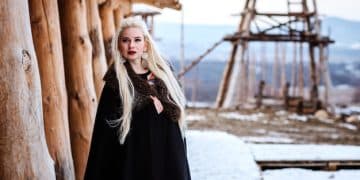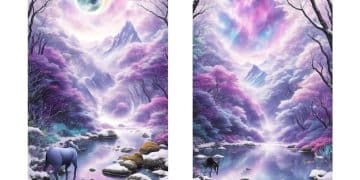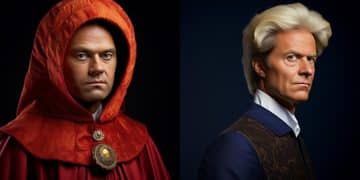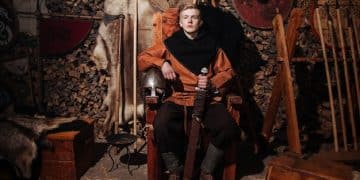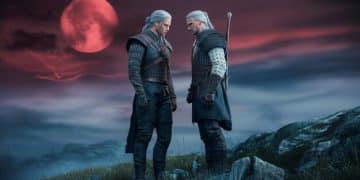Netflix’s The Witcher: Fact-Checking Costumes and Set Design
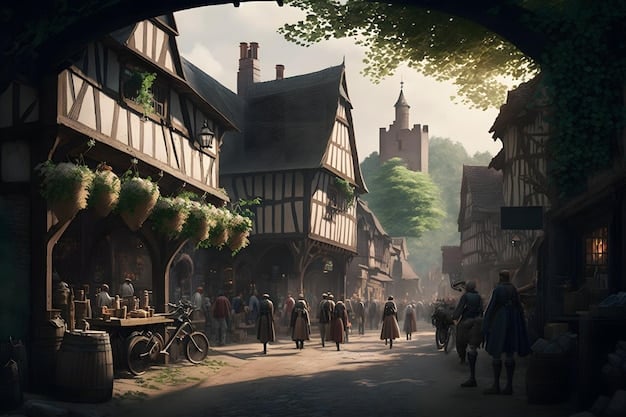
Netflix’s ‘The Witcher’ has garnered attention for its costumes and set design; however, a closer examination reveals varying degrees of historical accuracy and fidelity to the source material, the books by Andrzej Sapkowski.
Netflix’s ‘The Witcher’ has captivated audiences with its blend of fantasy, action, and political intrigue. But how well does the show’s visual presentation, specifically its costumes and set design, align with both historical accuracy and the spirit of Andrzej Sapkowski’s books? Let’s delve into the details to uncover the truth behind the spectacle of Netflix’s ‘The Witcher’: Examining the Accuracy of the Show’s Costumes and Set Design.
The World of The Witcher: Setting the Stage
The initial seasons of “The Witcher” drew criticism for its confusing timelines, making it difficult for viewers to initially grasp the overarching narrative. However, beyond narrative structure, the show’s strength and appeal lie in its immersive world-building.
The sets and costumes play a pivotal role in creating this immersive experience, transporting viewers to the Continent, a land filled with monsters, magic, and political intrigue. Examining the accuracy of these elements provides valuable insight into the show’s creative choices.
The Influence of Slavic and Eastern European History
Sapkowski’s books draw heavily from Slavic and Eastern European mythology and history. This influence permeates the show’s aesthetic, though not always in a strictly accurate manner. Identifying these influences helps to ground the fantastical elements of the story.
- Slavic Folklore: Many creatures and stories within “The Witcher” are directly inspired by Slavic folklore, providing a rich tapestry of cultural references.
- Medieval Eastern Europe: The political landscape and social structures often mirror historical periods in Eastern Europe, adding depth and realism to the fantasy setting.
- Visual Cues: The costumes, architecture, and heraldry subtly nod to historical Slavic and Eastern European cultures, enhancing the immersive quality of the world.
It is important to note that while influenced, the show does not strictly adhere to historical depiction.
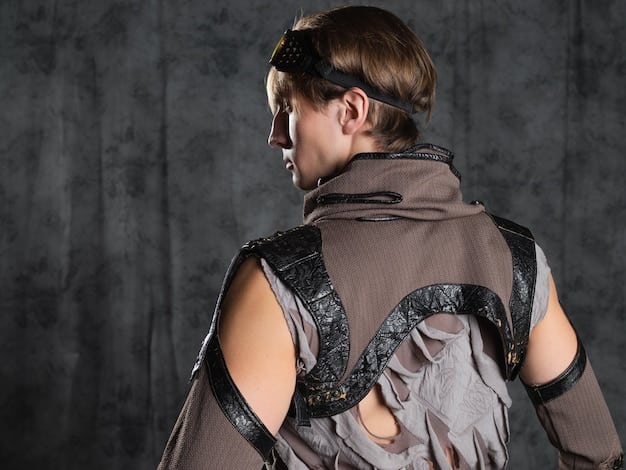
Costume Design: Accuracy vs. Adaptation
Costumes are a crucial aspect of any historical or fantasy production, conveying character, status, and cultural identity. In “The Witcher,” costume design blends practical considerations with aesthetic choices, resulting in a mix of accuracy and creative license.
Analyzing specific costumes can reveal the production’s priorities: whether to prioritize authenticity, visual appeal, or character representation. Understanding these choices provides insight into the overall vision of the show.
Geralt of Rivia’s Attire
Geralt’s leather armor is one of the most iconic elements of the show. While the armor is visually impressive, its practicality has been questioned.
The design evolves over the seasons, reflecting Geralt’s journey and the changing circumstances he faces. His attire is functional, yet still allows for freedom of movement.
- Leather Armor: Provides protection while allowing for agility in combat.
- Swords: Carried on his back, readily accessible for slaying monsters.
- Wolf Medallion: A symbol of his Witcher identity, alerting him to nearby monsters or magic.
Despite the seemingly minor considerations, the armour, swords and wolf medallion allows Geralt to embrace his identity and profession of choice.
Yennefer of Vengerberg’s Wardrobe
Yennefer’s costumes are a reflection of her power and status as a sorceress. Her attire is often elegant and luxurious, emphasizing her confidence and ambition.
Her wardrobe is diverse, ranging from elaborate gowns to more practical outfits for traveling and spellcasting. The color palette and materials reflect her personality and magical abilities.
Nilfgaardian Armor: A Point of Contention
In the first season, the Nilfgaardian armor was a subject of controversy among fans. Some criticised it for looking “cheap” or “uninspired.”
The wrinkled appearance of the armor detracted from the fearsome image the books portray. However, the design was revamped in later seasons, featuring a more traditional and imposing look.
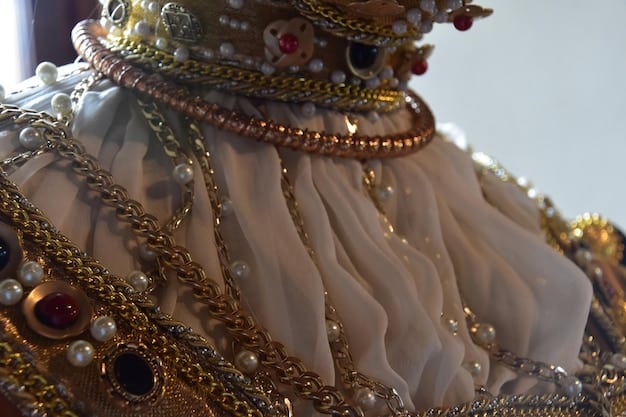
Set Design: Building a Believable World
The sets in “The Witcher” range from grand castles to humble villages, each contributing to the overall atmosphere of the Continent. Attention to detail is crucial in creating a believable world that draws viewers into the story.
The architectural styles, interior decoration, and even the placement of props can significantly impact the audience’s perception of the world’s culture and history. The show’s set designers have incorporated elements from various historical periods and cultures to create a unique visual landscape.
Kaer Morhen: The Witcher Stronghold
Kaer Morhen, the ancient stronghold of the Witchers, is one of the most iconic locations in the books and the show. The set design reflects the fortress’s age, history, and the harsh conditions endured by the Witchers.
The rugged stone walls, training grounds, and alchemical laboratories create a sense of a functional and spartan environment. Kaer Morhen is a place of training, resilience, and camaraderie, far removed from the concerns of kings and mages.
Cintra: A Kingdom of Wealth and Intrigue
Cintra, before its fall to Nilfgaard, is depicted as a prosperous kingdom with a rich cultural heritage. The set design showcases the wealth and sophistication of the Cintrån court.
The interiors are lavishly decorated with tapestries, artwork, and ornate furniture. The costumes of the Cintrån nobles reflect their elevated status and refined tastes.
- Opulent Interiors: Rich fabrics, intricate patterns, and valuable artifacts convey the kingdom’s prosperity.
- Grand Architecture: Imposing structures and elegant designs demonstrate Cintra’s power and influence.
- Royal Gardens: Manicured gardens and serene landscapes provide a contrast to the political turmoil within the court.
However, The Fall of Cintra is a major event in the early parts of the series. Due to a number of reasons, the costumes are not given much time on screen for watchers to appreciate.
Oxenfurt and Novigrad: Bustling Cityscapes
Oxenfurt and Novigrad are two of the largest and most vibrant cities in the Continent. The set design captures the bustling atmosphere of these urban centers.
The streets are crowded with merchants, beggars, and various characters, reflecting the diverse populations of these cities. The architecture is varied, with a mix of medieval and Renaissance influences.
The Balance Between Fantasy and Reality
Ultimately, “The Witcher” is a fantasy series, and some degree of artistic license is expected and often necessary. The goal is not always to replicate history perfectly, but to create a believable and engaging world that serves the story.
The creative team has made choices that prioritize visual appeal, character representation, and thematic resonance. The costumes and set designs are more than just window dressing; they are integral to the storytelling process.
| Key Point | Brief Description |
|---|---|
| ⚔️ Geralt’s Armor | Practical leather armor allowing agility and protection. |
| 👑 Yennefer’s Wardrobe | Elegant and luxurious, reflecting power and status. |
| 🏰 Kaer Morhen | Rugged Witcher stronghold, exuding history. |
| 🏛️ Cintra’s Court | Lavish interiors showcase wealth and sophistication. |
FAQ
▼
The costumes blend historical inspiration with fantasy elements. While not strictly accurate, they draw from various periods and cultures to create a unique visual style that suits the fantasy context.
▼
The initial design received criticism for its wrinkled and “cheap” appearance. To align with fan expectations and improve the visual quality, the armor was revamped in later seasons.
▼
The set design is crucial in creating a believable world, enhancing the overall atmosphere. The sets range from grand castles to humble villages which makes the show an immersive experience.
▼
The show draws inspiration from Slavic and Eastern European history, mirroring the cultural and mythological influences found in Sapkowski’s books. These influences are reflected in costumes, architecture, and heraldry.
▼
No, as a fantasy series, “The Witcher” prioritizes creating a believable and engaging world that serves the storyline. The goal is not to replicate history perfectly, but to enhance the narrative through visual storytelling.
Conclusion
In conclusion, while “The Witcher” takes liberties with historical accuracy in its costume and set design, these choices ultimately serve the story’s fantastical nature. The blend of historical inspiration and creative license contributes to a unique and visually captivating world, drawing viewers deeper into the Continent’s rich tapestry.
